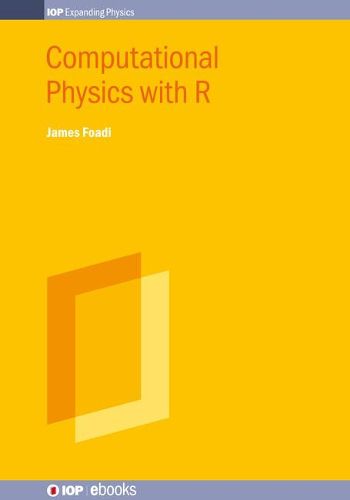Readings Newsletter
Become a Readings Member to make your shopping experience even easier.
Sign in or sign up for free!
You’re not far away from qualifying for FREE standard shipping within Australia
You’ve qualified for FREE standard shipping within Australia
The cart is loading…






This book has two primary goals: To introduce the R language to the physics community and to demonstrate its advantages as a simulations’ tool; and to make physics simulations accessible to a wider audience of scientists via the use of the many powerful and ready-to-use R packages and R functions. It covers traditional topics in classical and quantum computational physics, but its emphasis is in the adoption of the many features, routines and modules of the R platform to save coding time and to exploit the enormous potential and efficiency of R functions for the generation and analysis of data. With the exclusion of the introductory chapters, each chapter includes sections presenting: a) a theoretical introduction to specific computational techniques, b) their application to well-defined physics examples, c) the R approach to the coding required and d) ready-to-use packages and functions in R to carry out the tasks included in the physics examples, e) suggested projects with guided solutions. Readers of the book will learn R within familiar applications in physics and will inevitably acquire the statistical set of mind infused by the continued use of this programming language.
$9.00 standard shipping within Australia
FREE standard shipping within Australia for orders over $100.00
Express & International shipping calculated at checkout
This book has two primary goals: To introduce the R language to the physics community and to demonstrate its advantages as a simulations’ tool; and to make physics simulations accessible to a wider audience of scientists via the use of the many powerful and ready-to-use R packages and R functions. It covers traditional topics in classical and quantum computational physics, but its emphasis is in the adoption of the many features, routines and modules of the R platform to save coding time and to exploit the enormous potential and efficiency of R functions for the generation and analysis of data. With the exclusion of the introductory chapters, each chapter includes sections presenting: a) a theoretical introduction to specific computational techniques, b) their application to well-defined physics examples, c) the R approach to the coding required and d) ready-to-use packages and functions in R to carry out the tasks included in the physics examples, e) suggested projects with guided solutions. Readers of the book will learn R within familiar applications in physics and will inevitably acquire the statistical set of mind infused by the continued use of this programming language.